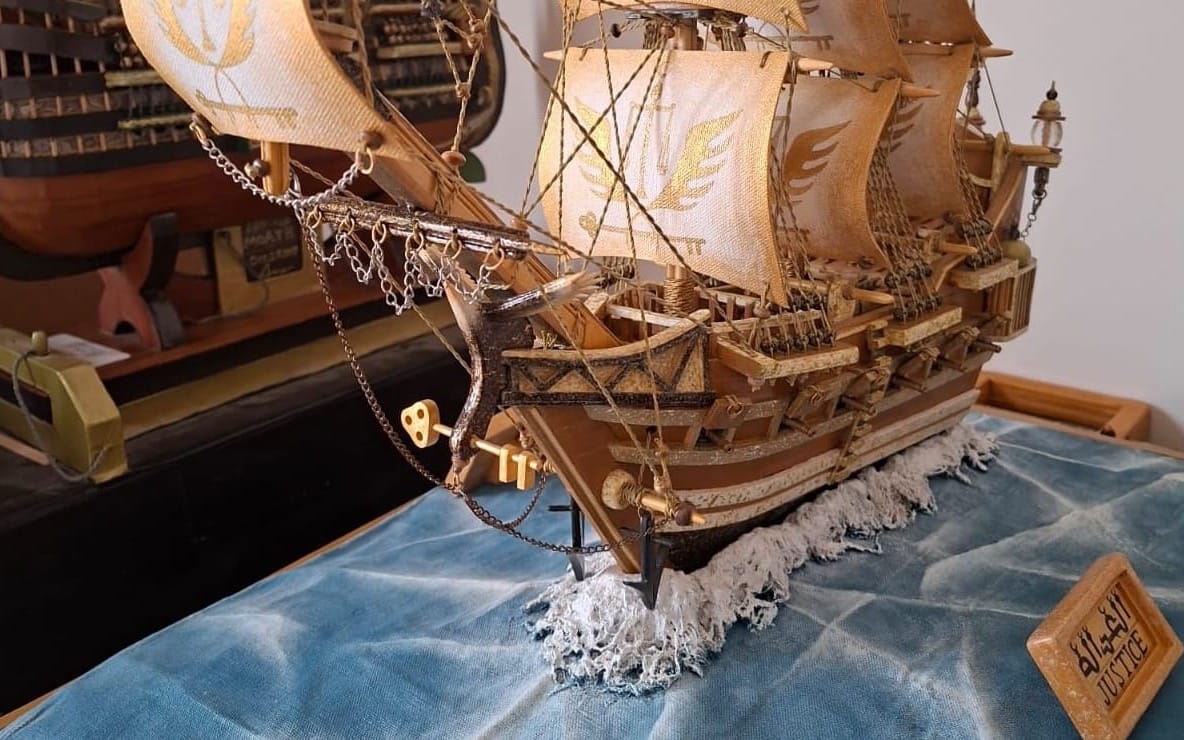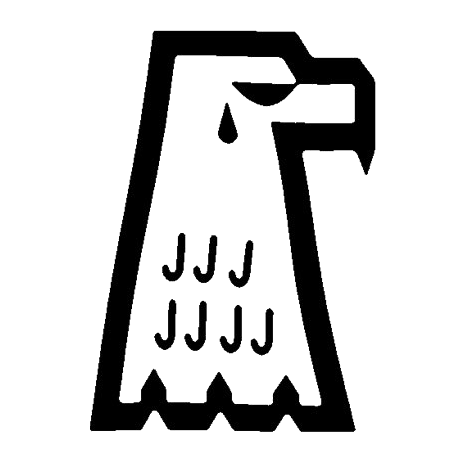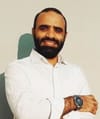The Artists Who Carried Guantánamo in Their Hands
"I promise not to forget." A former detainee talks to two innocent GTMO artists who resisted torture and injustice. There are some things that freedom still denies them

Edited by Spencer Ackerman
SPENCER HERE. Longtime subscribers will remember our occasional contributor Mansoor Adayfi, who spent 15 years caged at Guantánamo Bay. Mansoor recently reconnected with two friends from Guantánamo who were part of the Biden administration's final detainee release. His friends, Moath al-Alwi and Khalid Qassim, were known within the detention camp for their artwork and solidarity. When Mansoor sent me the piece that follows, I wanted to make sure you got to know Moath and Khalid as well.
Before you do, I just want to note that the hunger strike of now-transferred "Alligator Alcatraz" detainee Pedro Lorenzo Concepciòn, now on its 14th day according to El Pais' Carla Gloria Colomé, will be immediately familiar to anyone who remembers Guantánamo, down to the U.S. authorities denying that it is even happening. I now hand this edition of FOREVER WARS over to Mansoor.
IN JANUARY 2025, the United States finally released eleven Yemeni prisoners from the notorious U.S. military prison at Guantánamo Bay. The eleven men had been scheduled for release on October 14, 2023, but the Biden administration extended their captivity because of the Palestinian resistance retaliation on October 7. After spending as many as 23 years as "detainees," a designation used by the U.S. to sidestep the legal protections normally afforded to prisoners of war, without trial or formal charges, the eleven ex-detainees were resettled in Oman. Among those released were two remarkable men, Moath al-Alwi and Khalid Qassim. Friends, brothers in struggle, and artists, their stories are a testament to resilience, resistance, and the power of creativity that can emerge from the darkest of places.
As soon as they landed, the Omani government placed them in a so-called rehabilitation program for nearly six months. In reality, it was just another prison, even if it was the open-air kind. I had been tracking the cases of the released brothers daily, staying in touch with their families, and waiting for the moment I had long dreamed of: seeing them free.
That moment came in June when we had our first video call. Once I saw their faces, it felt like no time had passed, even though it had been nine years since I left Guantanamo for Serbia. My heart burst with joy and we thanked and praised Allah for their release. I jumped up, danced, and sang for them the same resistance song we used to sing in Guantánamo: Welcome, welcome! Whoever comes, truly, you are most welcome! A heartfelt welcome to whoever arrives!
I could feel life rushing back into my body. They sang it for me the day I was released. Now I got to sing it for them on their first day of freedom.
We laughed and teased each other, just as we had behind Guantánamo's walls. But behind the smiles, I could see the invisible wounds and scars carved into their souls and bodies by over twenty years of torture, isolation, and silence. As we talked about the time after my release, I wanted to be careful about how I introduced post-incarceration life, knowing what they were likely to face as they returned to the world. There would be no therapy, no rehabilitation and no integration programs that would help them transition into life after Guantánamo. Hours passed like minutes as we talked about the new world we were trying to understand, our brothers still locked behind barbed wire, and the art that gave voice to our resistance when words failed. That call was more than a reunion. It was a part of me breaking free again.
The conversation led us to discuss the artworks they created while imprisoned. I had only heard about some of them from our lawyers, so I asked to see them. Moath turned the camera to reveal the giant ships he sculpts, as well as his other artwork. I was left speechless. I was familiar with his work but now it was on a different level—very detailed and expressive. With each piece, Moath shared beautiful stories that accompanied his creations.
The Trump administration banned art from leaving Guantánamo. The camp administration would also confiscate their artwork, making it difficult for Moath, Khalid and others to express themselves, and sometimes the camp would restrict their access to art supplies. Khalid found a creative way to adapt. He would collect stones and other materials from the camp to make his art. His creativity was only matched by his resourcefulness. Khalid gathered bedsheets to paint on, stones to transform into necklaces, chunks of Guantánamo’s soil, and notably, an "anti-suicide" smock that had been used to torture us. Khalid could fill a museum. But each of his pieces was assigned a number, stamped, tagged, and registered in the camp system, just like human beings were. Our artwork wasn’t just made by us, it was treated like us: catalogued, controlled, abused—and in many cases, tortured, disappeared, or destroyed.
Guantánamo was not just a prison. It was a crucible of pain and resistance. Moath, Khalid, and I shared the brutal reality of hunger strikes, where we protested injustice with our own bodies, enduring the torture of years of force-feeding. Those years of torture and abuse broke our bodies, but they also forged a bond that nothing could destroy.
Though I was released years before Moath, Khalid, and the rest of the brothers, my heart stayed with them inside. I promised I would never forget. That promise became the title of my memoir, Don’t Forget Us Here. Our brotherhood was a form of rebellion, a defiant whisper against the silence imposed on us.
This article is about them. It's about the brothers who are still imprisoned. It's about survival, struggle, and the power of art born behind bars. It is, above all, a promise not to forget.
Moath al-Alwi: The Shipbuilder of Memory and Hope
Moath is a master artist. His painstakingly built ships and his vibrant paintings are vessels of memory and resistance. Inside Guantánamo, he used whatever he could—mop ropes, dental floss, toothpicks, cardboard—to keep building his elaborate miniature ships. Every ship Moath created there tells a story: of stolen journeys, buried dreams, and unbroken spirits. His art bears the official U.S. government stamp not by accident, but by design. He insisted that every piece carry that stamp, turning a symbol of captivity into one of defiance.
How did art help you survive inside Guantánamo?
"Art was my refuge,” Moath said. “When words failed, my hands spoke. Building ships and painting let me escape. Each piece was a memory I refused to lose.”
Some of Moath’s artwork was confiscated by camp authorities. A ship named Justice that took him years to build was "arrested or kidnapped," he says, using words we used when the camp administration confiscated our art. The authorities even placed some of them in an empty solitary confinement block, locked in a cell marked "Do Not Enter" for years. Moath refused to give up. "How can I give up on children?" he said. "Who gives up on their children?" He continued: "I spent years fighting for the Justice’s freedom till it was released not just for solitary confinement but from Guantánamo too. This ship is part of me and my life."
His lawyer, Beth Jacob, was a lifeline. She fought relentlessly to protect Moath's art and to provide him with art supplies. Moath speaks of her with deep gratitude.
What does the U.S. government stamp on your artwork mean to you?
"At first, it was a mark of oppression," he said. "But I chose to keep it. That stamp says this art survived. It carries the truth they tried to hide. It’s a testimony to their injustice and cruelty and to our resistance and resilience."
To see Moath’s art is to see Guantánamo through new eyes—those of a man whom the United States disappeared and silenced, and who transformed that imposed silence into resistance and testimony.
Khalid Qassim: The Rock Collector and Voice of Resistance
Khalid’s story is one of quiet strength. Under the Trump administration, he endured years of solitary confinement and punishment for hunger striking and protesting injustice in the camp. He was one of many denied access to art classes and supplies, especially after a 2017 exhibition of Guantánamo art at John Jay College in New York.
Yet Khalid never stopped creating. He taught himself English inside Guantánamo. At one point, he even became my teacher. He is also a gifted singer. "Reciting the Qur’an and singing gave me a sense of peace. It helped ease the pain of prison and washed it away," Khalid said. In Guantánamo, the Qur’an was our refuge and sanctuary. It helped us hold on to our sanity. Many of the prisoners memorized it, and for those who did, it transformed them. It planted something deep inside. They became calmer, more centered, more patient. It made them better.
What is the meaning behind your rocks and soil?
"Each rock has a soul," Khalid told me, smiling with mystery. "I collected them to remember the brothers, the land we were taken from, the ground that holds our memories. The soil from Guantánamo… it carries our pain, our hope, and memories. It’s a monument, and a puzzle. For now."
How did you teach yourself English in Guantánamo?
"I remembered my attempt to translate for a fellow prisoner in 2002, which led to 27 of us being taken to solitary confinement and the rest of us being punished in the block, I had no English but wanted to help, I got it wrong, guards took that as chance to punish and hurt everyone, that day I determined to learn the language." Khalid continued: "I had no teacher but the will to survive. I listened to guards, read whatever I could find, asked others to teach me. I listened to every word I could hear, tried to memorize it, I have no pen or paper, just my brain. It took me years and years till finally I had access to books, pen and paper. I learned the language then I taught others. Even you," he answered in perfect English, laughing.
How did losing access to art supplies affect you?
"They tried to silence me and crush me," Khalid said. “But I kept creating in my mind, in my dreams. When I couldn't paint, I sang. When I couldn’t sing, I resisted. Art isn’t what you hold. It’s what holds you.
"After the art exhibition in 2017 at John Jay College in New York, the camp administration ended the art teacher contract, which meant no art class and no art supplies. The Trump administration claimed that they own our works or creations. They stopped art from leaving Guantánamo and confiscated our work. We had to protest that hideous policy. We went on hunger strike. I spent years in solitary confinement as punishment for protesting and resisting injustice, which meant no access to art materials. Moath and others too had to fight back for years to get art supplies from their families and lawyers," Khalid said.
Khalid showed me some of the items and artworks he managed to bring with him upon release. He has over 700 marked rocks, each stamped, dated, and assigned IDs by the U.S. military. Some were small, others large. He even preserved soil from Guantánamo in a piece of wood. I asked him about it.
"Think," he said. That’s Khalid, always hinting at a deeper meaning, never giving it away easily. He also showed me a large painting on Guantánamo bedsheets, and a piece of the prison’s chain-link fence.
"I told them, I’m not leaving Guantánamo without my stuff. I’m not leaving a piece of me in the prison. It took years and years to get to this point to manage to take most of our work," Khalid added.
Leaving Guantánamo: Part of Me Still Lives in That Prison
Moath described his final days in Guantánamo with bittersweet clarity. He walked the camp, touching walls, fences, chains, everything he had known for two decades. "In the last few months in Guantánamo, I felt sadness. I felt the walls, cells, and fences talking to me. Wherever I go or look, there’s a lot of me and us there," he said. "Of course, I was happy to leave. But part of me and of us stayed behind. I was happy and sad at the same time, mixed emotions saying my last words to where I spent half of my life: Be at peace, dear Guantánamo; I will leave you in Allah's trust. Thank you for everything. I wish you freedom soon. I’m sure one day you will be. We will not forget you, as you will not forget us all."
Moath al-Alwi and Khalid Qassim are more than survivors; they are storytellers, artists, and witnesses to one of the biggest crimes in modern history. Their art carries the voices of those still silenced, the stories that were never supposed to be told. Both Moath and Khalid want to rebuild their lives, continue producing artwork, and get degrees in art. But will that be possible?
Khalid and Moath both live in uncertainty in Oman. Omani officials have informed the former prisoners that they can stay only for two years and will be deported back to Yemen. They have already spent six of those months in the Omani prison just transitioning to their new home.
“You can’t plan your life; you can’t do anything. We are going to be dumped back to where we have nothing to start our lives after the Americans stripped me of half of my life in Guantánamo,” Khalid said.
The previous group of 28 Yemenis and two Afghanis were resettled to Oman under a resettlement agreement between the US and Omani governments. The men were told they would not be deported and were told to forget Yemen, Oman is their home. They were treated well, easily integrated into society, got married, had kids, found jobs, and lived there for almost ten years. None committed any violations or caused any problems.
But the Omani government told the men not to contact their lawyers, NGOs, or media. They were not allowed to study or start their own businesses. Then, in early 2024, the Omani government told the men that they had two weeks to leave the country. Everyone was shocked. Up until that point, we thought Oman was the best at treating former Guantánamo prisoners. But the reality was that these men lived there without legal status or any rights. The Omanis forcibly deported the men back to Yemen, a country at that point torn apart by ten years of war, siege, occupation, and starvation. Twenty-eight families now face yet another round of hardship.
"They lied to us. They told us [to] either leave or they would make our lives hell here—no housing, no jobs, you will be in the street. I wish I hadn’t married; I have kids now with chronic disease. I told them to let me stay until the situation in Yemen resolved then I would leave, but they threatened me. My daughters and wife suffer from chronic diseases and struggle every day. I couldn’t find a job and can’t cover the medical costs for my daughters. The Omanis welcomed us, then kicked us out like terrorists of their country. It’s Guantánamo 2.0," Mohammed said.
Moath, Khalid and the nine other newly released men in Oman will face the same fate, living in limbo and waiting to be forced back to Yemen where they have nothing. They spent around 23 years in a U.S. military prison only to be again sent to a war zone.
As of today, 15 men remain caged in the wartime prison at Guantánamo. Three have been cleared for release, three are deemed "forever prisoners"—never to face any form of trial nor release—while eight have either active or completed cases before the kangaroo-court U.S. military commissions. The final prisoner, Ramzi bin al-Shibh, has been ruled incompetent to stand trial in the 9/11 tribunal, leaving his ultimate fate uncertain once again.
But earlier this year, the Trump administration expanded Guantanamo's migration-detention center, which pre-dated the wartime prison. As of last month, the U.S. is caging approximately 72 migrants there, hailing from Venezuela, Nicaragua, Nigeria, the United Kingdom, and 22 other countries. Shifting Guantánamo from a military detention facility for Muslim men into a large-scale immigration detention center marks a new and troubling chapter in the history of the naval station, renewing pressing questions about human rights, immigration policy, and the future of detention practices.
Mansoor Adayfi is a former Guantánamo prisoner, writer, activist, and CAGE International’s Guantánamo Project Coordinator.
WALLER VS. WILDSTORM, the superhero spy thriller I co-wrote with my friend Evan Narcisse and which the masterful Jesús Merino illustrated, is available for purchase in a hardcover edition! If you don't have single issues of WVW and you want a four-issue set signed by me, they're going fast at Bulletproof Comics! Bulletproof is also selling signed copies of my IRON MAN run with Julius Ohta, so if you want those, buy them from Flatbush's finest!
No one is prouder of WVW than her older sibling, REIGN OF TERROR: HOW THE 9/11 ERA DESTABILIZED AMERICA AND PRODUCED TRUMP, which is available now in hardcover, softcover, audiobook and Kindle edition. And on the way is a new addition to the family: THE TORTURE AND DELIVERANCE OF MAJID KHAN.

